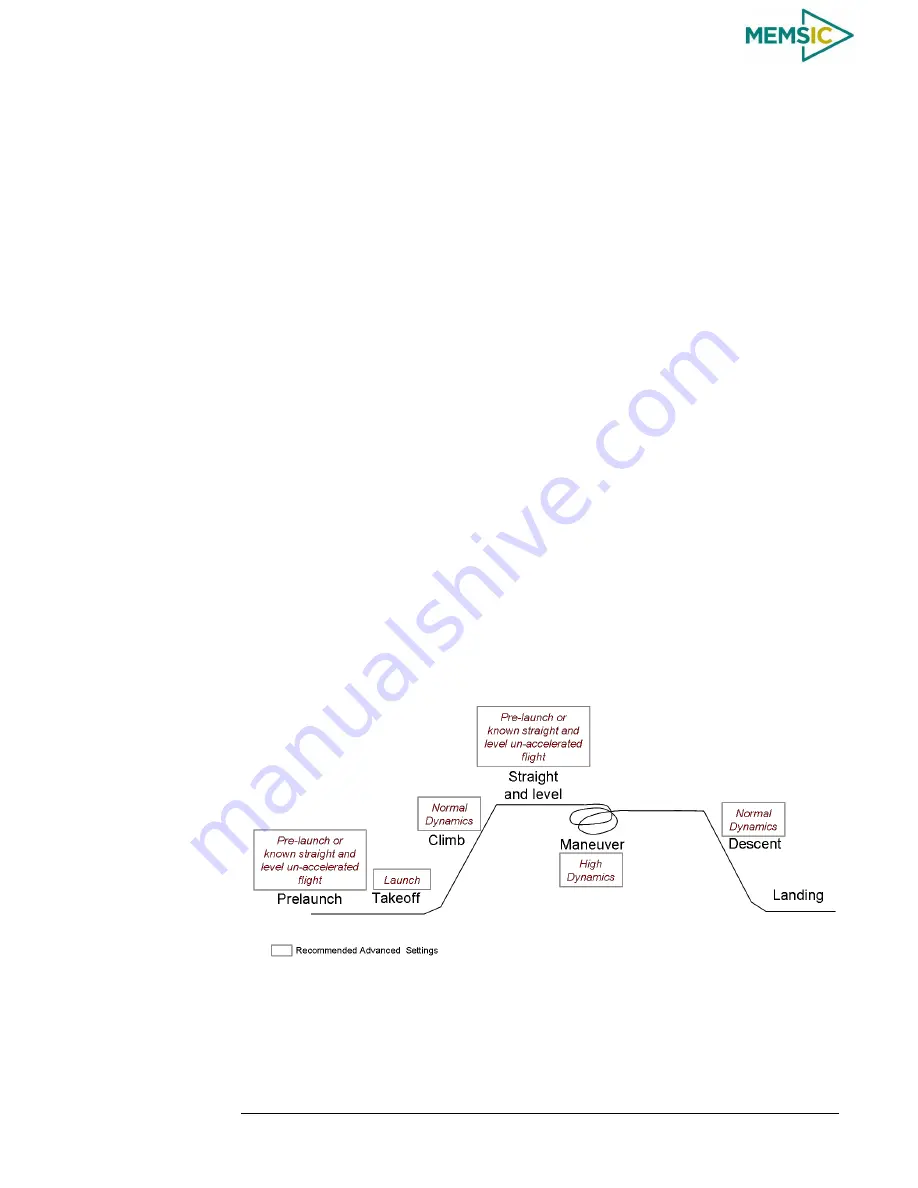
DMU380SA Series
User’s Manual
________________________________________________________________________
Doc# 7430-0026 Rev.01
Page 45
EXAMPLE
Figure 17 shows a typical flight profile of the fixed wing aircraft and the corresponding
advanced settings that one can configure adaptively depending on a flight phase:
Prelaunch is the phase of flight in which an aircraft goes through a series of
checkups (hardware and software) on the ground before takeoff. The aircraft is a
static condition,
Takeoff is the phase of flight in which an aircraft goes through a transition from
moving along the ground (taxiing) to flying in the air, usually along a runway.
The aircraft is under horizontal acceleration and may suffer from vibrations
coming from an engine and ground contact forces transmitted from its landing
gear.
Climb is the phase of a flight, after take off, consisting of getting the aircraft to
the desired flight level altitude. More generally, the term 'climb' means increasing
the altitude. The aircraft is under vertical acceleration until it reaches the steady-
state climb rate.
Straight and level flight is the phase of flight in which an aircraft reaches its
nominal flight altitude and maintains its speed and altitude. The aircraft is under
equilibrium (See Figure 17).
Maneuver is the phase of flight in which an aircraft accelerates, decelerates, and
turns. The aircraft is under non-gravitational acceleration and/or deceleration
(See Figure 17).
Descent is the phase of flight in which an aircraft decreases altitude for an
approach to landing. The aircraft is under vertical deceleration until it captures a
glide slope (See Figure 17).
Landing is the last part of a flight, where the aircraft returns to the ground (See
Figure 17).
Figure 17.
Typical flight profiles of fixed wing aircraft and the corresponding advanced settings.
















































